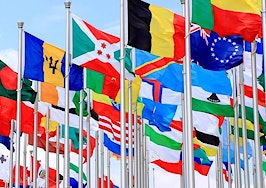Are you set up for success in 2016? Join 2,500 real estate industry leaders Aug. 4-7, 2015, at Inman Connect in San Francisco. Get Connected with the people and ideas that will inspire you and take your business to new heights. Register today and save $100 with code Readers.
Takeaways:
- Distressed sales, cash sales and institutional investment purchases hit multiyear lows in June.
- At the same time, sellers, on average, disposed of single-family homes and condos for above estimated market value for the first time in nearly two years.
- Daren Blomquist, vice president at RealtyTrac, noted that the housing recovery will continue to be dependent on traditional buyers who utilize financing.
The volume of distressed sales, cash sales and purchases made by institutional investors hit multiyear lows in June.
At the same time, sellers, on average, disposed of single-family homes and condos for above estimated market value for the first time in nearly two years.
According to RealtyTrac’s June and midyear home sales report, distressed sales accounted for 9 percent of all home sales in June, the lowest total since January 2011.
In only 10 states did the volume of distressed sales account for more than 10 percent of all sales activity in June, led by Illinois at 14.6 percent.
Not surprising, Chicago had the highest percentage of distressed sales at 14.7 percent. Other major metros where distressed sales accounted for more than 10 percent of all June sales volume included:
- Baltimore (14.4 percent)
- Orlando (13.8 percent)
- Jacksonville, Florida (13.6 percent)
- Memphis (13.4 percent)
All-cash buyers accounted for nearly 23 percent of all home sales last month, the lowest percentage since August 2008. Despite this, some states still witnessed a high volume of all-cash deals, namely New Jersey (50.9 percent), Florida (44 percent) and New York (39.4 percent).
Additionally, 17 states saw cash deals account for more than 23 percent of total June sales.
Markets with an increasing share of cash sales during June included:
- Raleigh, North Carolina
- Greenville, South Carolina
- Bellingham, Washington
- Knoxville, Tennessee
- Providence, Rhode Island
- San Jose, California
Institutional investors — entities purchasing at least 10 properties during a calendar year — accounted for only 1.7 percent of all sales in June, the same share as in May. These two months accounted for the lowest monthly share of institutional buyers dating back to January 2000.
Major metros where institutional buying volume accounted for the largest percentage of total sales included:
- Tampa (4.3 percent)
- Atlanta (4.0 percent)
- Tulsa, Oklahoma (3.9 percent)
- Oklahoma City (3.7 percent)
- Nashville (3.7 percent)
June represented the first month since July 2013 that the national sales price-to-value ratio exceeded 100 percent, as homes sold for an average of $291,450.
Major metros where homes sold above estimated market value included San Francisco (106 percent); Hartford, Connecticut (105 percent); Baltimore (105 percent); Rochester, New York (104 percent); and Providence, Rhode Island (103 percent).
Other major markets where more buyers paid above market value included Washington, D.C., Phoenix, Sacramento, Portland, Seattle, San Jose and St. Louis.
“Higher-value markets with a larger share of homes priced above the loan limits set by FHA and Fannie and Freddie Mac markets are the most likely to struggle in the second half of the year,” Daren Blomquist, vice president at RealtyTrac, warned.

Blomquist noted that the housing recovery will continue to be dependent on traditional buyers who utilize financing. The health of high-priced trophy markets like San Francisco and San Jose will, in many ways, be tied more to global economic forces, which will impact the choices made by foreign cash buyers focused on U.S. single-family homes.
Midyear sales hit nine-year high
RealtyTrac also released home sales data for the first four months of this year. The data show that 914,291 homes and condos sold during the period, the highest level of activity for the first four months of a year since 2006.
“As the investor-driven housing recovery faded in the first half of 2015, first-time homebuyers, boomerang buyers and other traditional owner-occupant buyers started to step into the gap and pick up the slack,” Blomquist said.
There were 23 markets where sales volume in the first four months of 2015 was at 10-year highs. Markets that saw the largest uptick in sales during the first four months compared to previous years included:
- Denver
- Columbus, Ohio
- San Antonio
- Tucson, Arizona
- Palm Bay-Melbourne-Titusville, Florida
Roughly 43 percent of major metros with a population exceeding 1 million reached eight-year highs for homes sales during the period. These markets included New York, Dallas, Houston, Seattle and Portland.
Sellers in the first half of 2015 sold their homes for an average of 13 percent above the original purchase price — the highest percentage in price appreciation since 2007.
Major markets where sellers realized the largest average home price gains were:
- San Jose, California (41 percent)
- San Francisco (37 percent)
- Denver (29 percent)
- Portland (25 percent)
- Los Angeles (25 percent)
- Seattle (20 percent)
There were six major markets where sellers sold below their original purchase price:
- Chicago (7 percent below)
- Cleveland (7 percent)
- Hartford, Connecticut (3 percent)
- Jacksonville, Florida (2 percent)
- St. Louis (1 percent)
- Orlando (1 percent)








